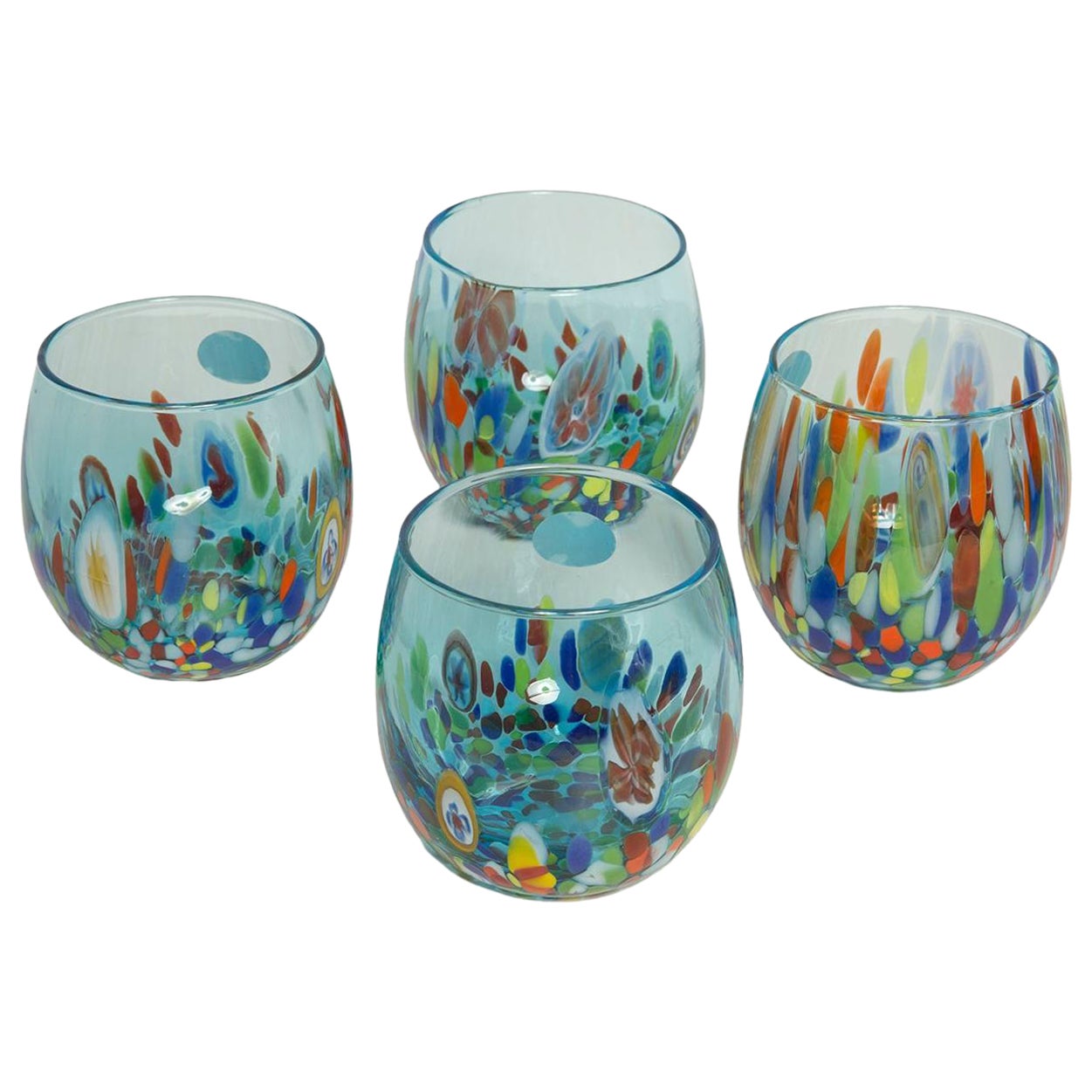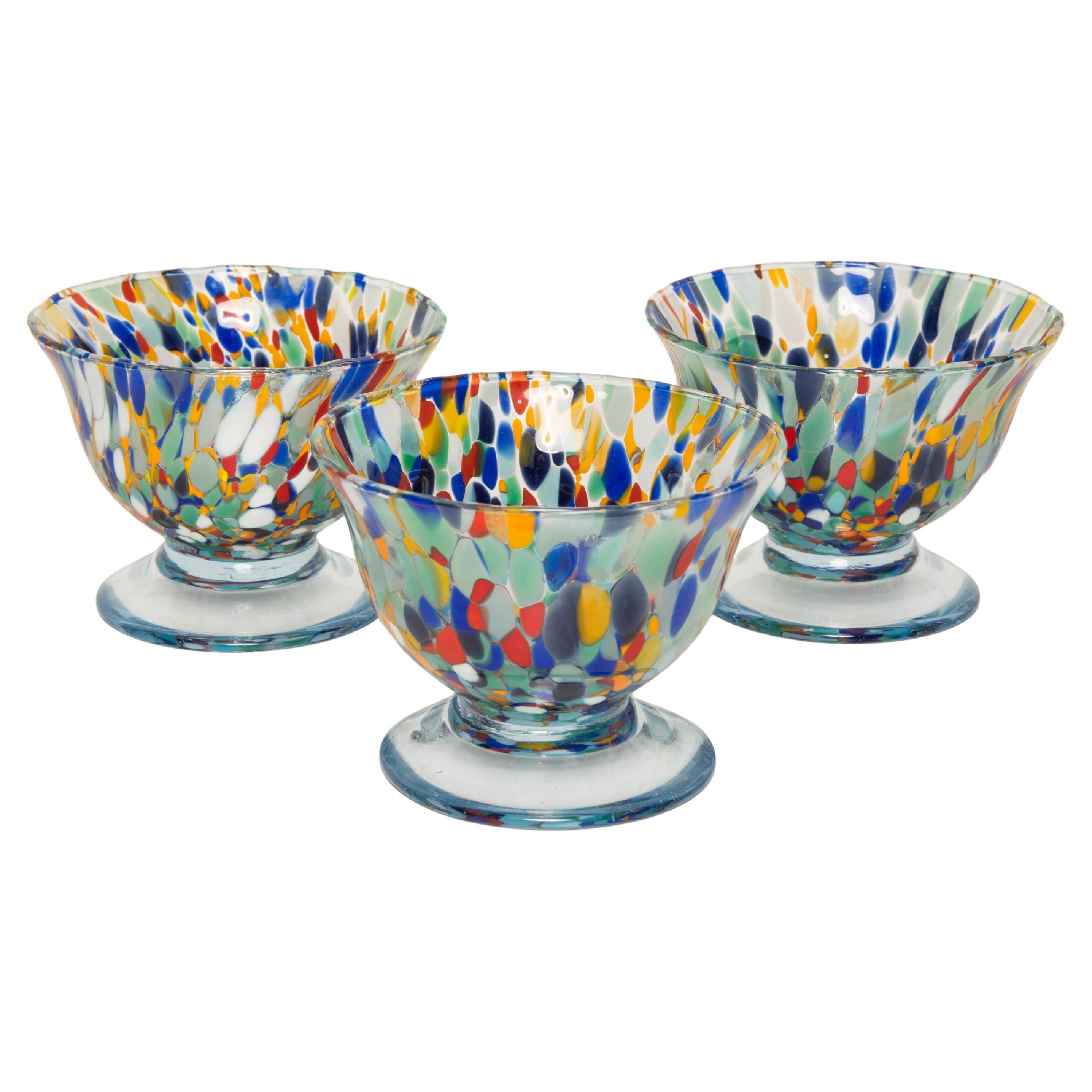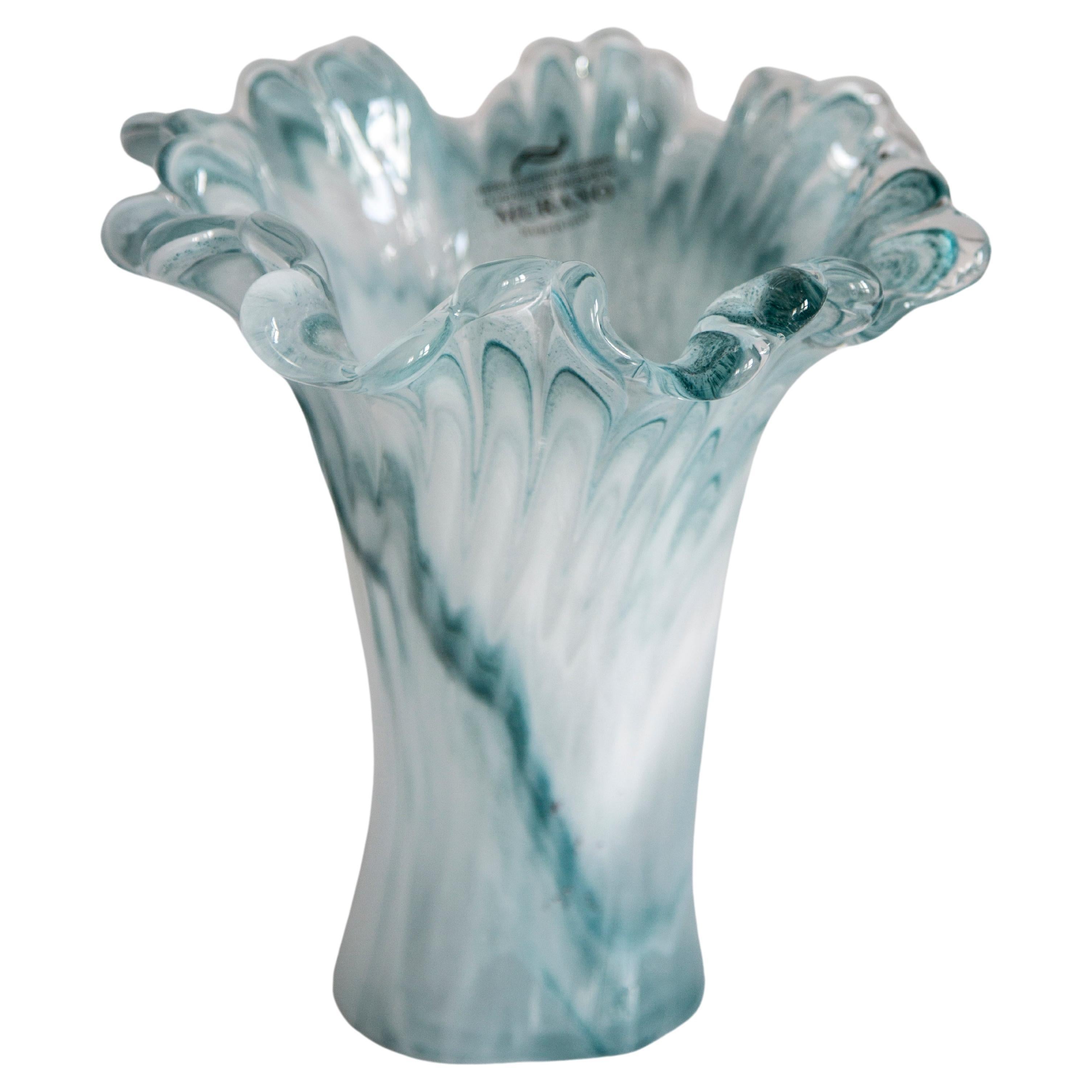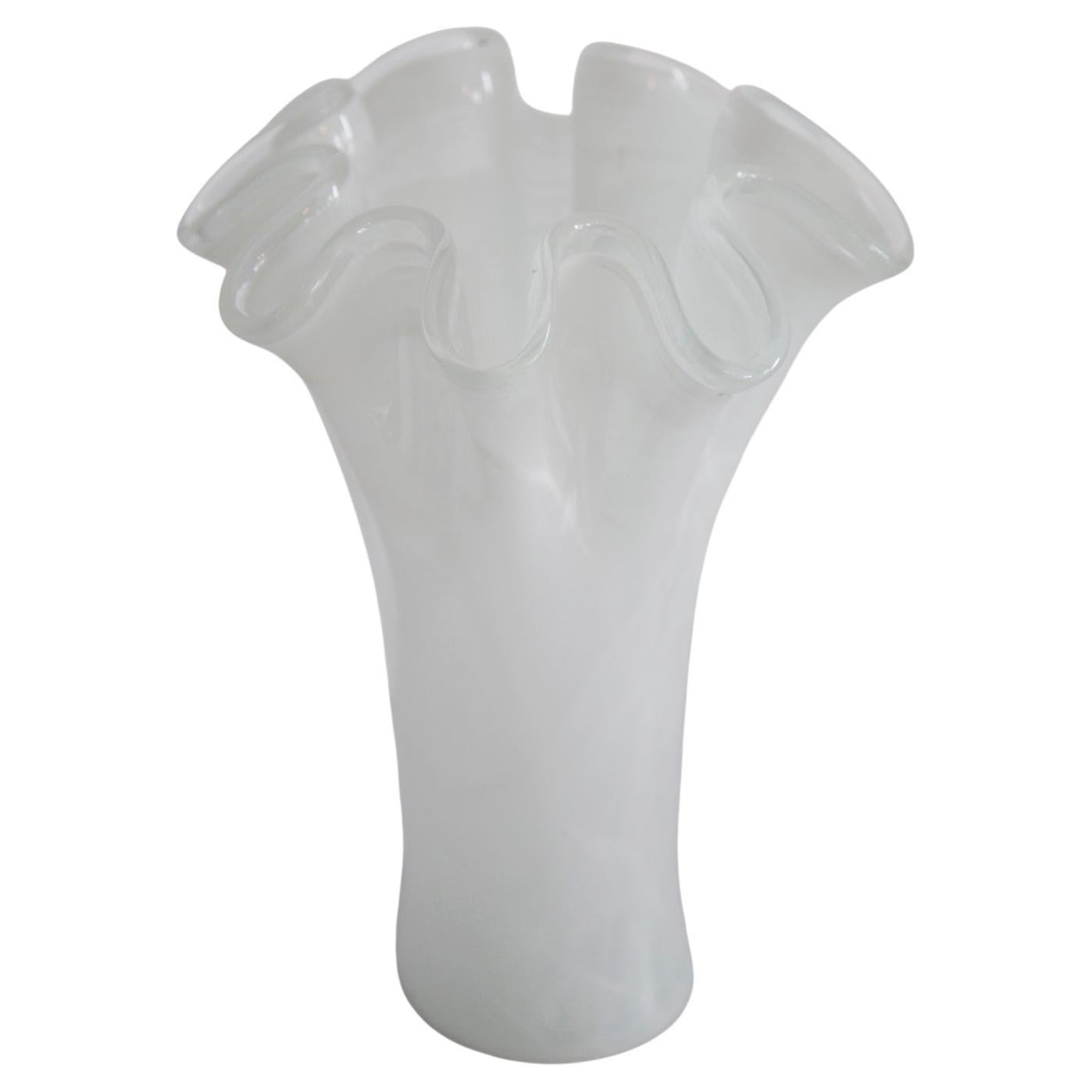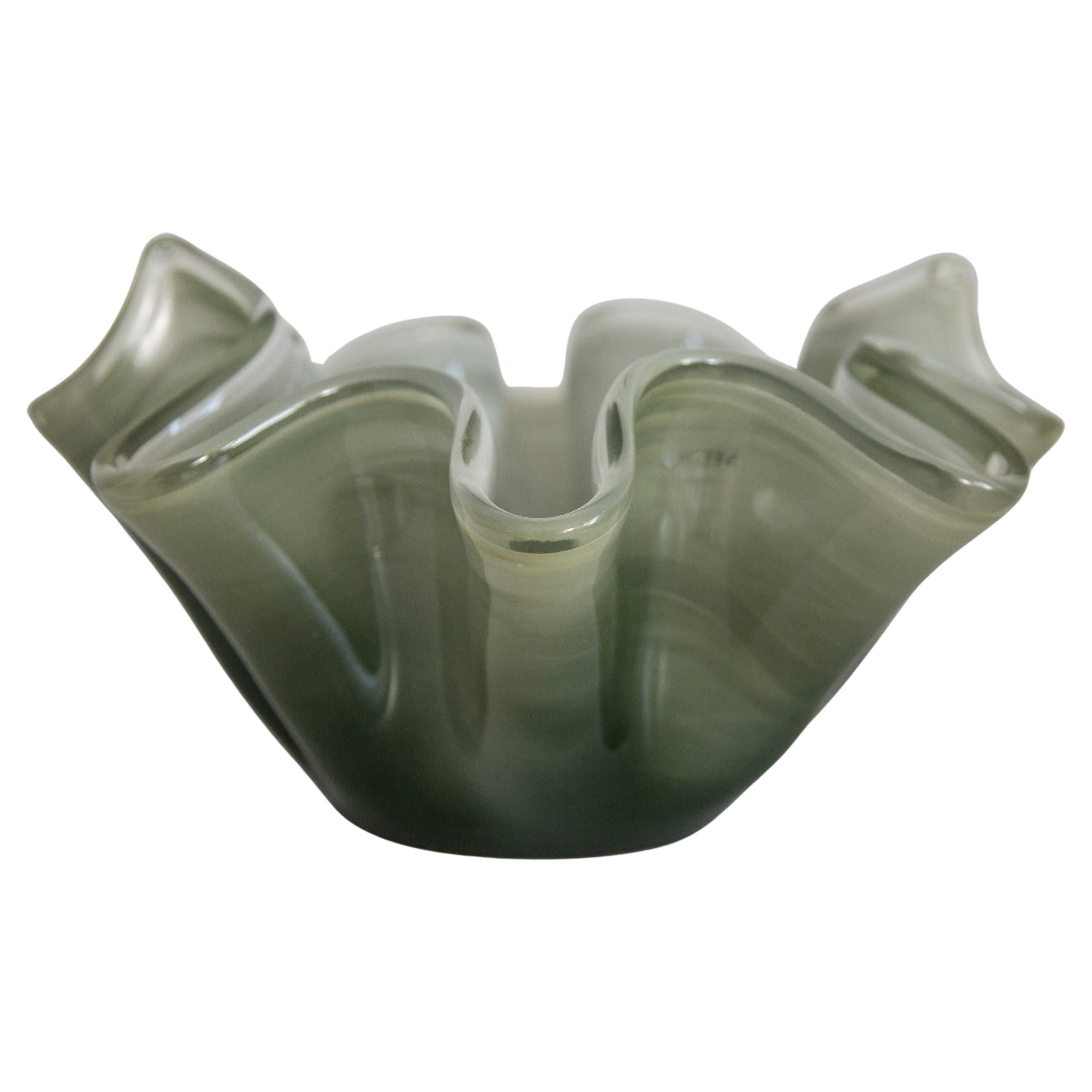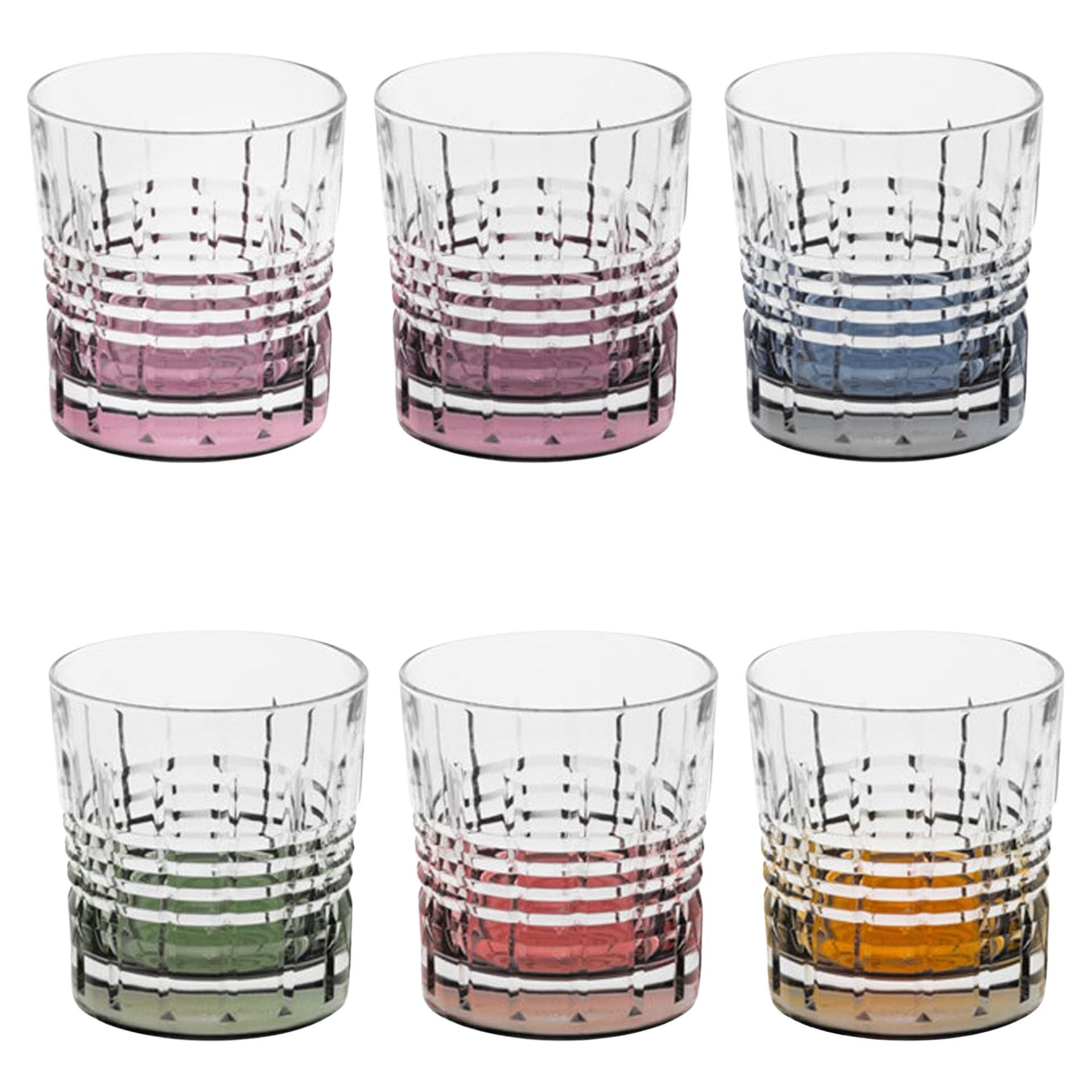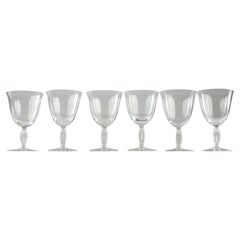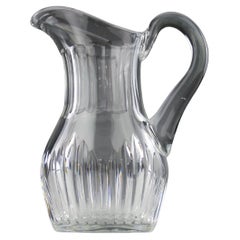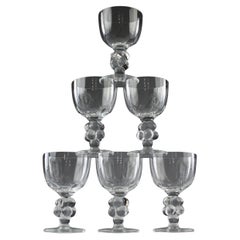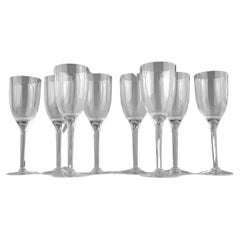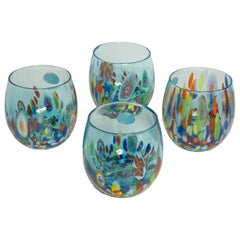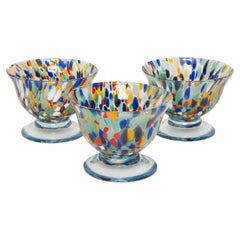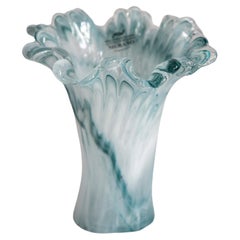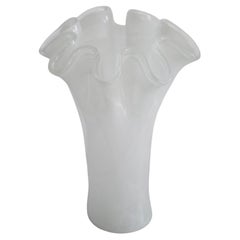Items Similar to Sawaya & Moroni, Water Glasses, Italy, 2000s
Want more images or videos?
Request additional images or videos from the seller
1 of 11
Sawaya & Moroni, Water Glasses, Italy, 2000s
About the Item
Six beautifully thin Sawaya & Moroni crystal water glasses, Italy circa 2000. In their original box, with reinforced padding.
Dimensions in cm ( H x D ) : 8.2 x 9.3
Secure shipping.
"Sawaya & Moroni emerges on the international design scene in 1984 relatively quickly combining professional talent of architect and designer William Sawaya with entrepreneurship of Paolo Moroni. The company is now set as a manufacturer of high quality design furniture.
Both partners are from areas unrelated to the furniture, so the lack of family’s tradition to be respected and passed, typical of this area, becomes a positive element, free from all conceptual and productive restrictions. Thanks to this freedom borns a collection of limited editions signed by the great protagonists of contemporary architecture, design and art, together with a multitude of furniture, silver and artifacts that have found place in private collections and design museums around the world.
Every product has a story. In the course of our century, artistic values have gradually seeped into a variety of fields, so that artistic significance has come to be attributed to many objects originally designed for other purposes. The extremes of the aesthetically-inclined transformations of practically any object and product can be found in various artistic movements. One of these is Dada, which paradoxically invited the observer to see the most everyday of industrial products as works of art. Another one was Pop Art, which channelled the stream of media images and mass consumption products towards the mill of art. In Italy, we also had the Poor Art movement, whose aim was to use art to salvage even the least valuable of industrialised society's cast-offs, such as the poor materials of iron, paper and brick.
The wisdom of hindsight demonstrates the logic behind these development: with a certain degree of arrogance, artistic quality was attributed by the market in opposition to the material value of the work and above all in contrast to the actual work put into achieving the final result. This was certainly one of the more unreasonable and provocative phenomena of our age, as art seemed to have become a way of a tributing an excessive value (firstly aesthetic, but as a consequence also economic) to an object that had a precious little intrinsic value in terms of materials, technique and work.
Today's presentation of a collection of artistic silver pieces is therefore a challenge to this attitude. Each object in the collection - whether a candlestick or a fruit bowl, a tray or a caraffe - is practically unique, strongly individual and exceptional, unlike the "multiple" approach and the widespread technical reproduceability so much used and abused in the arts. But in this collection of silver, it is not so much the quality of the material that defines the character of the product as the accumulation of a long, slow, complex process of elaboration and work, an approach that turns on its head the concept of attributing value to a work of art in a purely arbitrary way, by conferring aesthetic status on technically poor objects created without any mastery.
Every one of these silver object has the uniqueness of a prototype, as each of them is practically handmade. Although production is preceded by a detailed design study, the results are achieved individually by the complex process of hand craftsmanship, right down to the tiniest detail. The architects and designers who designed the collection are well-known and highly authoritative. But the contribution made by the craftsmen to converting the design into a product enjoys an equal quality and authority, although they are less well-known. Although these pieces are the results of layer upon layer of such profound design conception, craftsmanship and artistic care that they are worthy of display in a museum, this does not mean that they neglect their 1'unctional objectives: an authentic work of art need not fear being used.
A tray or a candlestick made in this way is a "noble" object and a work of art by virtue of this way of blending the conceptual design and the creative process. In this way, each of these silver objects tells a story. These are not pieces designed once and for all and then mass-produced by an industry that uses contemporary artistic misunderstandings to spread and increase they value.
The pieces presented here are all unique, each one always has a story to tell: the story that has brought them individually to their visible result, just like the portrait that each one of us has of ourselves, which tells how we have developed as individual human beings.
The brand Sawaya & Moroni is mainly known for his research and conceptual design for its daring collaborations with architects such as Jean Nouvel, Daniel Libeskind, Dominique Perrault, Michael Graves, OM Ungers, Massimiliano Fuksas, Zaha Hadid, Charles Jencks, Kazuo Shinohara, Ettore Sottsass, Adolfo Natalini, Jakob + MacFarlane, Hani Rashid, Mario Bellini, Jean-Michel Wilmotte, but also for design projects as well as signed by the same William Sawaya from designers or artists such as Ron Arad, Michael Young, Richard Hutten, John Maeda, Toshiyuki Kita, Borek Sipek, Toni Cordero, Platt + Young, Christian Ghion, Mario Cananzi, Jeannot Cerutti, Terry Dwan, Matt Sindall, Veit Streitenberger, Luigi Serafini, Marco Mencacci, Tim Watson, Setsu + Shinobu Ito, and others." - Sawaya & Moroni Website
- Creator:Sawaya & Moroni (Designer)
- Dimensions:Height: 3.23 in (8.2 cm)Diameter: 3.67 in (9.3 cm)
- Style:Modern (Of the Period)
- Materials and Techniques:
- Place of Origin:
- Period:
- Date of Manufacture:2000s
- Condition:
- Seller Location:PARIS, FR
- Reference Number:1stDibs: LU8131233636972
About the Seller
5.0
Vetted Professional Seller
Every seller passes strict standards for authenticity and reliability
Established in 2020
1stDibs seller since 2023
16 sales on 1stDibs
Typical response time: <1 hour
- ShippingRetrieving quote...Shipping from: PARIS, France
- Return Policy
Authenticity Guarantee
In the unlikely event there’s an issue with an item’s authenticity, contact us within 1 year for a full refund. DetailsMoney-Back Guarantee
If your item is not as described, is damaged in transit, or does not arrive, contact us within 7 days for a full refund. Details24-Hour Cancellation
You have a 24-hour grace period in which to reconsider your purchase, with no questions asked.Vetted Professional Sellers
Our world-class sellers must adhere to strict standards for service and quality, maintaining the integrity of our listings.Price-Match Guarantee
If you find that a seller listed the same item for a lower price elsewhere, we’ll match it.Trusted Global Delivery
Our best-in-class carrier network provides specialized shipping options worldwide, including custom delivery.More From This Seller
View AllLalique After René Lalique, Six Fontainebleau Water Glasses, France 1950s
By René Lalique
Located in PARIS, FR
Beautiful Lalique Fontainebleau champagne set of six. Other wine glasses from the same collection are available in the shop.
In very good condit...
Category
Vintage 1950s French Art Deco Glass
Materials
Crystal
Saint-Louis, Crystal Water Pitcher "Liane" Model, France 2000s
By Saint Louis
Located in PARIS, FR
Beautiful Saint-Louis crystal carafe, "Liane" model.
In excellent condition. In its original box which has some wear.
Dimensions in cm ( H x L x l ) : 21.5 x 17 x 12
Secure shipping.
Category
Early 2000s French Modern Crystal Serveware
Materials
Crystal
Lalique France, "Clos-Vougeot" Red Wine Glasses, 1970s
By Lalique
Located in PARIS, FR
Beautiful Lalique France "Clos-Vougeot" red wine glasses, France 1970s.
In very good condition. In their original box.
Dimensions in cm ( H x D ) : 12 x 7.6
Secure shipping.
Category
Vintage 1970s French Art Deco Glass
Materials
Crystal
Lalique, "Smile of the Angel" Champagne Glasses (8), France 1980
By Marc Lalique
Located in PARIS, FR
Superb service of eight champagne glasses "Smile of the Angel" also titled "Angel of Reims" designed by Marc Lalique for the Lalique Maison.
In very good condition. One glass with a...
Category
Vintage 1980s French Art Deco Glass
Materials
Crystal
Lalique, "Smile of the Angel" Champagne Glasses (16), France 1980
By Marc Lalique
Located in PARIS, FR
Superb service of sixteen champagne glasses "Smile of the Angel" also titled "Angel of Reims" designed by Marc Lalique for the Lalique Maison.
In very good condition. One glass with a small chip on the lip.
Dimensions in cm (H x D): 20.4 x 7
Secure shipping.
The Lalique Maison was created by René Lalique who was one of the greatest artists of his time, whether as a jeweler or master glassmaker. He marked the Art Nouveau and Art Deco periods with his unique style.
Lalique is recognized as one of the most important jewelry designers and glass maker of the French Art Nouveau period, creating innovative pieces for Samuel Bing's new store in Paris, Maison de l'Art Nouveau. He began exhibiting his work under his own name as early as 1894, notably at the Salon des artistes français, 1897 and 1898. The great glassmaker Émile Gallé discovered him at the first one and praised him highly. His stand at the 1900 Universal Exhibition in Paris was a great success.
While keeping sources of inspiration from the Art Nouveau woman, fauna and flora - including the peacock, various insects and sometimes a fantastic bestiary - he innovated by using materials barely used for jewelry at the time: glass, enamel, leather, horn, mother of pearl, often preferring semi-precious stones to precious stones. The introduction of volume in jewelry is facilitated by his knowledge in modeling. He designed his models, having them made by a team of chisellers, sculptors and enamellers that he carefully recruited.
Many women from the nobility, the bourgeoisie and the entertainment world began to wear his extraordinary jewelry, such as the Marquise Arconati-Visconti, the Countess of Béarn, Madame Waldeck-Rousseau, and Sarah Bernhardt, for whom he created a stage costume in 1902 for the revival of the play Théodora at the Sarah-Bernhardt Theater.
Lalique was the only modern artist whose client and friend Calouste Gulbenkian became. Gulbenkian acquired the famous Pectoral à la libellule (circa 1897-1898), a masterpiece much admired at the 1900 World's Fair, which he lent to the tragedienne Sarah Bernhardt.
After the end of the First World War, Lalique's colorful and fantastic jewelry were no longer in fashion. The creator sensed this and decided to convert to the Art Deco style through glassware in 1920. Thus, the neo-classical and geometric Art Deco replaces Art Nouveau. According to Olivier Mauny, former CEO of Lalique, his creations paved the way for an industrialization of art objects, because one of the best ways to include luxury and aesthetics in everyday life is to make everyday objects. He will create many objects such as vases, cups, candlesticks, perfume bottles, radiator caps for the Citroën 5CV (1925), decorations for the restaurant cars of the Côte d'Azur Pullman Express (1929), decorations for the dining room of the first class of the Normandie liner...
Category
Vintage 1980s French Art Deco Glass
Materials
Crystal
Lalique After René Lalique, Five Fontainebleau Liquor Glasses, France 1950s
By René Lalique
Located in PARIS, FR
Beautiful Lalique Fontainebleau set of five liquor glasses. Other wine glasses from the same collection are available in the shop.
In very good ...
Category
Vintage 1950s French Art Deco Glass
Materials
Crystal
You May Also Like
Set of Two Blue Murano Glasses, Italy, Europe, 2000s
Located in 05-080 Hornowek, PL
Beautiful set of glasses, murano glass, made by one of the many glass manufacturers based in the region of Empoli, Italy. Would make a great addition to any collection! Very good ori...
Category
2010s Italian Mid-Century Modern Ceramics
Materials
Glass, Murano Glass
Set of Three Blue Murano Glasses, Ice Cream Cups, Italy, Europe, 2000s
Located in 05-080 Hornowek, PL
Beautiful set of glasses, small bowls, perfect as a ice cream cups, murano glass, made by one of the many glass manufacturers based in the region of Empoli, Italy. Would make a great...
Category
2010s Italian Mid-Century Modern Ceramics
Materials
Glass, Murano Glass
Midcentury Vintage Acqua Blue Murano Glass Vase, Italy, 2000s
Located in 05-080 Hornowek, PL
Beautiful vase made from Murano glass in perfect condition. The vase looks like it has just been taken out of the box. No jags, defects etc. Only one unique piece.
Venetian glass (...
Category
Mid-20th Century Italian Mid-Century Modern Ceramics
Materials
Glass, Murano Glass
Mid Century Vintage White Murano Glass Vase, Italy, 2000s
Located in 05-080 Hornowek, PL
Beautiful vase made from Murano glass in perfect condition. The vase looks like it has just been taken out of the box. No jags, defects etc. Only one unique piece.
Venetian glass (...
Category
Mid-20th Century Italian Mid-Century Modern Ceramics
Materials
Glass, Murano Glass
Mid Century Style Murano Glass Medium Green Bowl, Italy, 2000s
Located in 05-080 Hornowek, PL
This original vintage glass element was designed and produced in the 2000s in Lombardia, Italy. It is made in Sommerso Technique and has a fantastic faceted form. The vibrant color m...
Category
Mid-20th Century Italian Ashtrays
Materials
Crystal
Incontro Set of 6 Water Glasses
By Creart
Located in Milan, IT
Delicate colors, striking texture, and exquisite craftsmanship are the distinctive qualities of this set from the Incontro Collection. Each of these six water glasses is fashioned of...
Category
2010s Italian Glass
Materials
Crystal
$322 / set
